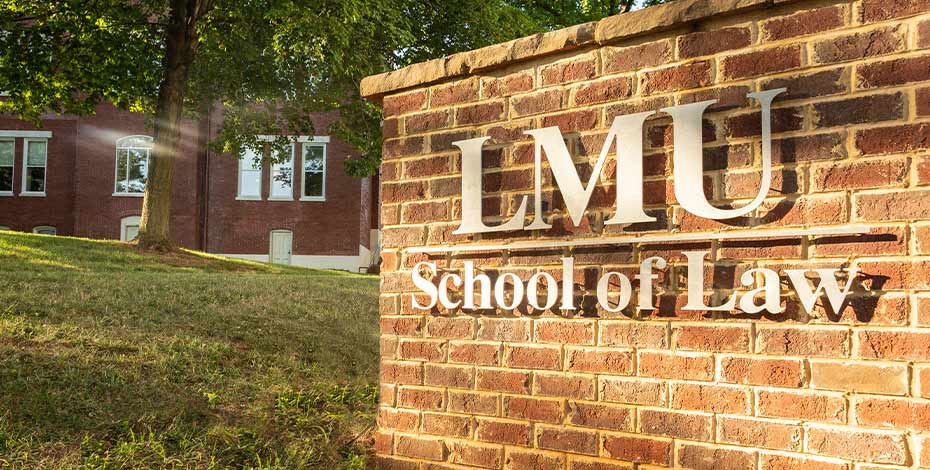افتتحتْ كلية الحقوق بجامعة لينكولن ميموريال أبوابها في عام 2009. As a new and growing program, in a region and at a school that attracts many first-generation college students, LMU wanted to put all the right tools in place so that its law school could secure accreditation and help its students succeed. ExamSoft proved to be the perfect tool for equipping students to pass the bar exam and helping the program secure accreditation.
Lincoln Memorial University is a small liberal arts college accredited by the Southern Association of Colleges and Schools (SACS). LMU places a high value on innovation and is proud to offer small class sizes and advanced technology to enrich the student experience. With a main campus in Harrogate, Tennessee, LMU extends to nine off-campus learning sites, including the Duncan School of Law in downtown Knoxville. Founded in 2009, LMU Law strives to provide students with individualized attention that leads to successful outcomes.
Issue
As a new school in Tennessee, LMU Law received accreditation by the Tennessee Board of Law Examiners, which permitted its graduates to sit for the Tennessee bar exam. However, accreditation by the American Bar Association (ABA) was a high priority for LMU Law, since ABA accreditation would permit its graduates to sit for the bar exam in any state. Many of the ABA’s accreditation standards require law schools to ensure student achievement, partially represented by passage rates on the bar exam and employment outcomes.
LMU Law initially applied for provisional ABA accreditation—the first step in receiving full ABA accreditation—in December 2011. However, ABA accreditors denied accreditation to the young law school, citing, among other things, that the law school did not demonstrate an ability “to provide the academic support necessary to assure each student a satisfactory opportunity to complete the program, graduate, and become a member of the legal profession.” At the time, no student had graduated from the law school.
After graduating in May 2013, members of LMU Law’s inaugural class sat for the July 2013 bar exam in Tennessee. They passed the bar exam at an impressive 81% passage rate.
In 2014, the ABA granted LMU Law provisional accreditation and, in 2018, ultimately granted the law school full accreditation.
When the Tennessee Board of Law Examiners adopted ExamSoft for the administration of the bar exam in 2014, LMU Law decided to follow suit. The rationale was that LMU Law wanted to provide its students the same exam experience that they would be experiencing on the bar exam after graduation. As a result, LMU Law replaced the testing platform it had been using for exam administration and security with ExamSoft in 2014.
ExamSoft Adoption
It quickly became evident to the LMU Law faculty that ExamSoft could easily supplant the previous technology in place in terms of exam security. But, more importantly, it became clear that they could reap many more benefits from the rich data and insights on student performance and outcomes to build on their high bar passage rates.
Given many LMU Law students are first generation higher ed students, it was of utmost importance to not only dig deep into learning and test-taking processes and pitfalls that might be familiar to students from other backgrounds, but to do so for each student individually. Knowing what each student struggled with helped the LMU Law faculty work closely with their students to focus efforts on the most pressing issues. With ExamSoft, faculty could easily identify students’ struggles and help them study smarter, not harder.
The relatively new, small faculty at LMU Law at the time eagerly adopted ExamSoft, diving into the software—importing questions and designing categories—in order to take maximum advantage of the investment and improve student learning and outcomes.
With its unique student body makeup and accreditation challenge, LMU Law especially benefitted from using ExamSoft categories—a system for tagging questions to specific learning outcomes. To do that, faculty had to agree on which categories to prioritize in order to meet the goals of improving bar passage rates and receiving full ABA accreditation.
With few examples to draw from, LMU Law set out to chart its own path. It decided to focus on the subject matter topics published by the National Conference of Bar Examiners, the body that drafts many of the questions on the bar exam, as a starting point. The thinking was, tagging the questions likely to be covered on the bar exam would ensure close monitoring of students’ bar preparedness and give faculty the insights needed to adjust instruction accordingly. Soon after, the ABA layered on the need to demonstrate progress toward achieving programmatic learning outcomes in order to receive accreditation. And so, LMU Law added programmatic outcomes to its question categories. The faculty also added course-level outcomes to ensure appropriate coverage on a granular level and to comply with SACS accreditation requirements.
It was clear that ExamSoft could show faculty very specific opportunities for students to improve. Now we can pinpoint knowledge gaps, so our students know what to focus on.
فورية
ExamSoft has created important opportunities for a school with many first-generation students.
By tagging questions to subject matter, programmatic and course-level outcomes, LMU Law faculty can look at each individual student to see recurring issues, or areas where he or she needs intervention. From the data, faculty can create smart strategies for remediation that are responsive to specific issues be it misunderstanding of a concept, a struggle to analyze the material, or a challenge with writing. Each of these calls for very different types of study or support. With the right insights, students can get the right help.
The transparency and greater insight into strengths and opportunities created by ExamSoft increased student buy-in at LMU Law. It left students with a sense of empowerment and control over their studying and, ultimately, their success. Rather than attacking the wide universe of potential pitfalls—a daunting proposition—they can focus on their specific challenges. Students are encouraged, knowing they can study smarter and, ultimately, pass the bar exam.
Furthermore, teaching has been transformed as a result of ExamSoft. Instruction is very responsive to student needs. More weight is given to the most pervasively misunderstood and pressing questions.
One example can be found in LMU Law’s final semester bar preparation course, called Multistate Bar Exam Skills. In preparation for a new semester, the course instructor pulls a report of the upcoming cohort to see how they performed on previous bar-tested questions throughout their entire time in law school. By looking at the cohort’s prior testing, the course instructor can identify gaps in instruction and/or comprehension and focus on those in the course. And by looking specifically at each student’s performance, the course instructor can easily identify those individuals who would benefit from targeted intervention before it is too late.
All of this helps LMU Law combat attrition and maintain its high level of bar passage. Again, with a large percentage of students who are new to higher ed and the law, there is sometimes a higher propensity for these students to just give up. With ExamSoft, LMU Law faculty can identify students who are struggling early on and connect them to the information or resources they need to stay the course in their legal education.
LMU Law faculty is continuing to evolve its use of ExamSoft, moving into using data to create modeling programs to better predict bar passage at an earlier stage in their legal education. As more data is collected and analyzed by the new law school through ExamSoft, LMU Law hopes to draw stronger and more meaningful correlations between student performance in the legal program and on the bar to further fine-tune teaching and its curriculum.








